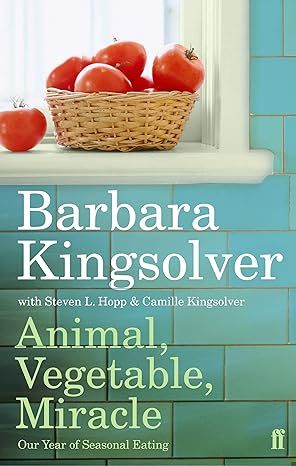Animal, Vegetable, Miracle: Our Year of Seasonal Eating
4.5
-
2,496 ratings
"We wanted to live in a place that could feed us: where rain falls, crops grow, and drinking water bubbles up right out of the ground."
Barbara Kingsolver opens her home to us, as she and her family attempt a year of eating only local food, much of it from their own garden. Inspired by the flavours and culinary arts of a local food culture, they explore many a farmers market and diversified organic farms at home and across the country. With characteristic warmth, Kingsolver shows us how to put food back at the centre of the political and family agenda. Animal, Vegetable, Miracle is part memoir, part journalistic investigation, and is full of original recipes that celebrate healthy eating, sustainability and the pleasures of good food.
Kindle
$15.99
Available instantly
Audiobook
$0.00
with membership trial
Hardcover
$24.99
Paperback
$15.26
Ships from
Amazon.com
Payment
Secure transaction
ISBN-10
0571233570
ISBN-13
978-0571233571
Print length
384 pages
Language
English
Publisher
Faber and Faber
Publication date
December 31, 2007
Dimensions
5.12 x 0.87 x 7.8 inches
Item weight
2.31 pounds
Product details
ASIN :
B01JYX7LKU
File size :
6465 KB
Text-to-speech :
Enabled
Screen reader :
Supported
Enhanced typesetting :
Enabled
X-Ray :
Enabled
Word wise :
Enabled
Sample
1 - CALLED HOME
This story about good food begins in a quick-stop convenience market. It was our family’s last day in Arizona, where I’d lived half my life and raised two kids for the whole of theirs. Now we were moving away forever, taking our nostalgic inventory of the things we would never see again: the bush where the roadrunner built a nest and fed lizards to her weird-looking babies; the tree Camille crashed into learning to ride a bike; the exact spot where Lily touched a dead snake. Our driveway was just the first tributary on a memory river sweeping us out.
One person’s picture postcard is someone else’s normal. This was the landscape whose every face we knew: giant saguaro cacti, coyotes, mountains, the wicked sun reflecting off bare gravel. We were leaving it now in one of its uglier moments, which made good-bye easier, but also seemed like a cheap shot—like ending a romance right when your partner has really bad bed hair. The desert that day looked like a nasty case of prickly heat caught in a long, naked wince.
This was the end of May. Our rainfall since Thanksgiving had measured less than one inch. The cacti, denizens of deprivation, looked ready to pull up roots and hitch a ride out if they could. The prickly pears waved good-bye with puckered, grayish pads. The tall, dehydrated saguaros stood around all teetery and sucked-in like very prickly supermodels. Even in the best of times desert creatures live on the edge of survival, getting by mostly on vapor and their own life savings. Now, as the southern tier of U.S. states came into a third consecutive year of drought, people elsewhere debated how seriously they should take global warming. We were staring it in the face.
Away went our little family, like rats leaping off the burning ship. It hurt to think about everything at once: our friends, our desert, old home, new home. We felt giddy and tragic as we pulled up at a little gas-and-go market on the outside edge of Tucson. Before we set off to seek our fortunes we had to gas up, of course, and buy snacks for the road. We did have a cooler in the back seat packed with respectable lunch fare. But we had more than two thousand miles to go. Before we crossed a few state lines we’d need to give our car a salt treatment and indulge in some things that go crunch.
This was the trip of our lives. We were ending our existence outside the city limits of Tucson, Arizona, to begin a rural one in southern Appalachia. We’d sold our house and stuffed the car with the most crucial things: birth certificates, books-on-tape, and a dog on drugs. (Just for the trip, I swear.) All other stuff would come in the moving van. For better or worse, we would soon be living on a farm.
For twenty years Steven had owned a piece of land in the southern Appalachians with a farmhouse, barn, orchards and fields, and a tax zoning known as “farm use.” He was living there when I met him, teaching college and fixing up his old house one salvaged window at a time. I’d come as a visiting writer, recently divorced, with something of a fixer-upper life. We proceeded to wreck our agendas in the predictable fashion by falling in love. My young daughter and I were attached to our community in Tucson; Steven was just as attached to his own green pastures and the birdsong chorus of deciduous eastern woodlands. My father-in-law to be, upon hearing the exciting news about us, asked Steven, “Couldn’t you find one closer?”
Apparently not. We held on to the farm by renting the farmhouse to another family, and maintained marital happiness by migrating like birds: for the school year we lived in Tucson, but every summer headed back to our rich foraging grounds, the farm. For three months a year we lived in a tiny, extremely crooked log cabin in the woods behind the farmhouse, listening to wood thrushes, growing our own food. The girls (for another child came along shortly) loved playing in the creek, catching turtles, experiencing real mud. I liked working the land, and increasingly came to think of this place as my home too. When all of us were ready, we decided, we’d go there for keeps.
We had many conventional reasons for relocation, including extended family. My Kingsolver ancestors came from that county in Virginia; I’d grown up only a few hours away, over the Kentucky line. Returning now would allow my kids more than just a hit-and-run, holiday acquaintance with grandparents and cousins. In my adult life I’d hardly shared a phone book with anyone else using my last name. Now I could spend Memorial Day decorating my ancestors’ graves with peonies from my backyard. Tucson had opened my eyes to the world and given me a writing career, legions of friends, and a taste for the sensory extravagance of red hot chiles and five-alarm sunsets. But after twenty-five years in the desert, I’d been called home.
There is another reason the move felt right to us, and it’s the purview of this book. We wanted to live in a place that could feed us: where rain falls, crops grow, and drinking water bubbles right up out of the ground. This might seem an abstract reason for leaving beloved friends and one of the most idyllic destination cities in the United States. But it was real to us. As it closes in on the million-souls mark, Tucson’s charms have made it one of this country’s fastest-growing cities. It keeps its people serviced across the wide, wide spectrum of daily human wants, with its banks, shops, symphonies, colleges, art galleries, city parks, and more golf courses than you can shake a stick at. By all accounts it’s a bountiful source of everything on the human-need checklist, save for just the one thing—the stuff we put in our mouths every few hours to keep us alive. Like many other modern U.S. cities, it might as well be a space station where human sustenance is concerned. Virtually every unit of food consumed there moves into town in a refrigerated module from somewhere far away. Every ounce of the city’s drinking, washing, and goldfish-bowl-filling water is pumped from a nonrenewable source—a fossil aquifer that is dropping so fast, sometimes the ground crumbles. In a more recent development, some city water now arrives via a three-hundred-mile-long open canal across the desert from the Colorado River, which—owing to our thirsts—is a river that no longer reaches the ocean, but peters out in a sand flat near the Mexican border.
If it crosses your mind that water running through hundreds of miles of open ditch in a desert will evaporate and end up full of concentrated salts and muck, then let me just tell you, that kind of negative thinking will never get you elected to public office in the state of Arizona. When this giant new tap turned on, developers drew up plans to roll pink stucco subdivisions across the desert in all directions. The rest of us were supposed to rejoice as the new flow rushed into our pipes, even as the city warned us this water was kind of special. They said it was okay to drink, but don’t put it in an aquarium because it would kill the fish.
Drink it we did, then, filled our coffee makers too, and mixed our children’s juice concentrate with fluid that would gag a guppy. Oh, America the Beautiful, where are our standards? How did Europeans, ancestral cultures to most of us, whose average crowded country would fit inside one of our national parks, somehow hoard the market share of Beautiful? They’ll run over a McDonald’s with a bulldozer because it threatens the way of life of their fine cheeses. They have international trade hissy fits when we try to slip modified genes into their bread. They get their favorite ham from Parma, Italy, along with a favorite cheese, knowing these foods are linked in an ancient connection the farmers have crafted between the milk and the hogs. Oh. We were thinking Parmesan meant, not “coming from Parma,” but “coming from a green shaker can.” Did they kick us out for bad taste?
No, it was mostly for vagrancy, poverty, or being too religious. We came here for the freedom to make a Leaves of Grass kind of culture and hear America singing to a good beat, pierce our navels as needed, and eat whatever we want without some drudge scolding: “You don’t know where that’s been!” And boy howdy, we do not.
The average food item on a U.S. grocery shelf has traveled farther than most families go on their annual vacations. True fact. Fossil fuels were consumed for the food’s transport, refrigeration, and processing, with the obvious environmental consequences. The option of getting our household’s food from closer to home, in Tucson, seemed no better to us. The Sonoran desert historically offered to humans baked dirt as a construction material, and for eats, a corn-and-beans diet organized around late summer monsoons, garnished in spring with cactus fruits and wild tubers. The Hohokam and Pima were the last people to live on that land without creating an environmental overdraft. When the Spaniards arrived, they didn’t rush to take up the Hohokam diet craze. Instead they set about working up a monumental debt: planting orange trees and alfalfa, digging wells for irrigation, withdrawing millions more gallons from the water table each year than a dozen inches of annual rainfall could ever restore. Arizona is still an agricultural state. Even after the population boom of the mid-nineties, 85 percent of the state’s water still went to thirsty crops like cotton, alfalfa, citrus, and pecan trees. Mild winters offer the opportunity to create an artificial endless summer, as long as we can conjure up water and sustain a chemically induced illusion of topsoil.
Oily Food
Americans put almost as much fossil fuel into our refrigerators as our cars. We’re consuming about 400 gallons of oil a year per citizen—about 17 percent of our nation’s energy use—for agriculture, a close second to our vehicular use. Tractors, combines, harvesters, irrigation, sprayers, tillers, balers, and other equipment all use petroleum. Even bigger gas guzzlers on the farm are not the machines, but so-called inputs. Synthetic fertilizers, pesticides, and herbicides use oil and natural gas as their starting materials, and in their manufacturing. More than a quarter of all farming energy goes into synthetic fertilizers.
But getting the crop from seed to harvest takes only one-fifth of the total oil used for our food. The lion’s share is consumed during the trip from the farm to your plate. Each food item in a typical U.S. meal has traveled an average of 1,500 miles. In addition to direct transport, other fuel-thirsty steps include processing (drying, milling, cutting, sorting, baking), packaging, warehousing, and refrigeration. Energy calories consumed by production, packaging, and shipping far outweigh the energy calories we receive from the food.
A quick way to improve food-related fuel economy would be to buy a quart of motor oil and drink it. More palatable options are available. If every U.S. citizen ate just one meal a week (any meal) composed of locally and organically raised meats and produce, we would reduce our country’s oil consumption by over 1.1 million barrels of oil every week. That’s not gallons, but barrels. Small changes in buying habits can make big differences. Becoming a less energy-dependent nation may just need to start with a good breakfast.
STEVEN L. HOPP
Living in Arizona on borrowed water made me nervous. We belonged to a far-flung little community of erstwhile Tucson homesteaders, raising chickens in our yards and patches of vegetables for our own use, frequenting farmers’ markets to buy from Arizona farmers, trying to reduce the miles-per-gallon quotient of our diets in a gasoholic world. But these gardens of ours had a drinking problem. So did Arizona farms. That’s a devil of a choice: Rob Mexico’s water or guzzle Saudi Arabia’s gas?
Traditionally, employment and family dictate choices about where to live. It’s also legitimate to consider weather, schools, and other quality-of-life indices. We added one more wish to our list: more than one out of three of the basic elements necessary for human life. (Oxygen Arizona has got.) If we’d had family ties, maybe we’d have felt more entitled to claim a seat at Tucson’s lean dining table. But I moved there as a young adult, then added through birth and marriage three more mouths to feed. As a guest, I’d probably overstayed my welcome. So, as the U.S. population made an unprecedented dash for the Sun Belt, one carload of us dog-paddled against the tide, heading for the Promised Land where water falls from the sky and green stuff grows all around. We were about to begin the adventure of realigning our lives with our food chain.
Naturally, our first stop was to buy junk food and fossil fuel.
In the cinder-block convenience mart we foraged the aisles for blue corn chips and Craisins. Our family’s natural-foods teenager scooped up a pile of energy bars big enough to pass as a retirement plan for a hamster. Our family’s congenitally frugal Mom shelled out two bucks for a fancy green bottle of about a nickel’s worth of iced tea. As long as we were all going crazy here, we threw in some 99-cent bottles of what comes free out of drinking fountains in places like Perrier, France. In our present location, 99 cents for good water seemed like a bargain. The goldfish should be so lucky.
As we gathered our loot onto the counter the sky darkened suddenly. After two hundred consecutive cloudless days, you forget what it looks like when a cloud crosses the sun. We all blinked. The cashier frowned toward the plate-glass window.
“Dang,” she said, “it’s going to rain.”
“I hope so,” Steven said.
She turned her scowl from the window to Steven. This bleached-blond guardian of gas pumps and snack food was not amused. “It better not, is all I can say.”
“But we need it,” I pointed out. I am not one to argue with cashiers, but the desert was dying, and this was my very last minute as a Tucsonan. I hated to jinx it with bad precipitation-karma.
“I know that’s what they’re saying, but I don’t care. Tomorrow’s my first day off in two weeks, and I want to wash my car.”
For three hundred miles we drove that day through desperately parched Sonoran badlands, chewing our salty cashews with a peculiar guilt. We had all shared this wish, in some way or another: that it wouldn’t rain on our day off. Thunderheads dissolved ahead of us, as if honoring our compatriot’s desire to wash her car as the final benediction pronounced on a dying land. In our desert, we would not see rain again.
Read more
About the authors
Barbara Kingsolver
Barbara Kingsolver was born in 1955 and grew up in rural Kentucky. She earned degrees in biology from DePauw University and the University of Arizona, and has worked as a freelance writer and author since 1985. At various times she has lived in England, France, and the Canary Islands, and has worked in Europe, Africa, Asia, Mexico, and South America. She spent two decades in Tucson, Arizona, before moving to southwestern Virginia where she currently resides.
Her books, in order of publication, are: The Bean Trees (1988), Homeland (1989), Holding the Line: Women in the Great Arizona Mine Strike (1989), Animal Dreams (1990), Another America (1992), Pigs in Heaven (1993), High Tide in Tucson (1995), The Poisonwood Bible (1998), Prodigal Summer (2000), Small Wonder (2002), Last Stand: America's Virgin Lands, with photographer Annie Griffiths (2002), Animal, Vegetable, Miracle: A Year of Food Life (2007), The Lacuna (2009), Flight Behavior (2012), Unsheltered (2018), How To Fly (In 10,000 Easy Lessons) (2020), Demon Copperhead (2022), and coauthored with Lily Kingsolver, Coyote's Wild Home (2023). She served as editor for Best American Short Stories 2001.
Read more
Reviews
Customer reviews
4.5 out of 5
2,496 global ratings
Kindle Customer
5
A memoir, a polemic, a sermon, and a call to locavorism
Reviewed in the United States on March 21, 2008
Verified Purchase
Review - Animal, Vegetable, Miracle: A Year of Food Life, by Barbara Kingsolver with Steven L. Hopp and Camille Kingsolver
This book is several things, a memoir, a polemic, a sermon, and a call to locavorism. On a small Virginia farm a family decides to experiment for one year eating mostly homegrown and locally-grown food. The cast is acclaimed writer Barbara Kingsolver, who gardens and writes the narrative, professor-husband Steven Hopp, who is allowed in the kitchen to bake bread and writes sidebar essays, late-teen daughter Camille, who writes observations, pertinent recipes and meal plans, and nine-year-old Lily, an earnest poultry entrepreneur.
Kingsolver is an accomplished writer of mostly novels and is an alert and delightful wordsmith. In this nonfiction work, her writing is entertaining but lacks discipline; she bounces from object to subject like a child with too many toys. A chapter titled Molly Mooching (a Molly is a morel mushroom) provides history on the farm Steven bought some years ago, delivers an apologia for tobacco farmers, offers Appalachian flora trivia, takes us on a hunt for morels, puts potatoes and other early plantings in the ground, expounds on onions, interjects an essay by Steven titled Is Bigger Really Better? and concludes with Camille who writes Getting It While You Can, a teen's perspective on her mother's food plan and a recipe for Asparagus and Morel Bread Pudding. All of which is fun, disconcerting, and marginally useful.
In addition to politics and sermons, twenty chapters take us through planning, planting, preparing, eating and preserving. Titles include Springing Forward, The Birds and the Bees, Growing Trust: Mid-June, Eating Neighborly: Late June, Zucchini Larceny: July, and Life in a Red State: August, a double-entendre of tomatoes and more politics. For dessert we accompany Barbara and Steven on a two-week second honeymoon in Italy.
This book is a teaser. It titillates the reader with the benefits of home gardening but provides few gardening details; it teases with the compelling concept of locavorism but lacks inspiring success stories. Worst, it is naïve. Experienced gardener-writers like Eliot Coleman, author of Four-Season Harvest, know and show how to keep a garden going year-round. Kingsolver apparently feels that the gardening world dies in autumn and does not reappear until asparagus pops up in spring.
Animal, Vegetable, Miracle is minimally useful as a reference book because, alas and inexplicably, there is no index. Thus, to remember the names of the six companies that control ninety-eight percent of the world's seeds, one must flip pages and hope for a lucky find. (It is in Chapter 3, titled Springing Forward.) You could write your own index. You could underline extensively and write key words at chapter beginnings. My messy alternative is to apply little sticky notes next to items I may wish to find again, so my copy now looks like a yellow-feathered flat bird.
Back matter includes a bibliography, a list of organizations, and sources for Steven's sidebar references. All of Camille's recipes may be found on the web site: [...] which has lots of photos. The site is a fun visit that puts a face on the people, the plants, and the animals.
I agree strongly with the locavore movement. The present food production system is a soil damaging, oil depleting, nutrition compromising scheme designed for corporate, not human health. For more on all that I recommend Michael Pollan's books: Omnivore's Dilemma, and, In Defense of Food.
Kingsolver has many fans so I hope that this book will create many converts to locavorism. But I'm skeptical, mindful of Steinbeck's admonition that, "No one wants advice, only corroboration." There is a plethora of advice in this book. But it will provide corroboration for those who are already concerned about the sad state of our food economy wherein any digestible item is supermarket available on every day of the year at great expenditure of oil and soil, at great reduction of flavor, at great loss to local communities and your checking account.
I have three pieces of advice for the Hoppsolvers (author construction): grow much more garlic, keep it in a cool place, not behind the kitchen stove, and, stop making your bread with flour that has been oxidizing since it was ground--grind wheat and other grains just before making your bread; it will be nutritionally superior and even more delicious.
In spite of being tossed from one subject to another time and again and learning almost nothing new about home food production, I enjoyed Kingsolver's range of interests and her entertaining writing. So here's a big thank you to all my homestead list friends who recommended that I read this book.
Read more
24 people found this helpful
lisan
5
Eat well and save our planet
Reviewed in the United States on January 20, 2024
Verified Purchase
I actually found my first copy of this book at Goodwill for $1. I love Barbara Kingsolver, so I grabbed it. Once I got home and started reading it, I could not put it down. She spent a year of her life trying to live off her land and/or eating locally grown food. The book was written a while ago, but it could have been written yesterday. She saw what was coming and changed her life accordingly. She has so many great and practical ideas for saving our planet while eating well. The book has seasonal recipes for the entire year. The ones I’ve tried so far are great! I now make my own pizza from scratch every Friday night. She got me interested in making my own cheeses, which led to another great book, Home Cheese Making by Ricki Carroll.
I gave my copy away and bought a new one for a Christmas gift. Now I have to buy a new one for myself.
Read more
Barb
5
Easy read, wonderful information and fun story!
Reviewed in the United States on February 10, 2024
Verified Purchase
When a book is hard to put down because it's so easy to read and so entertaining, why wouldn't you continue to enjoy the time with this story?
Cathe
5
I'm a locavore!
Reviewed in the United States on July 16, 2007
Verified Purchase
The more I read about the watering down of organic standards, the more I've been rethinking my food choices. It seems that most organic food is being produced by huge corporate farms and megacorporations. Those are not the industries I want to support with my food dollars. In the last year, I've been buying as much as possible from local farmers who may not be certified organic but who grow their crops using organic and sustainable methods. I feel I'm getting a better quality food and supporting my own community - and hopefully contributing less to global warming since my food doesn't have to travel miles to get to me.
So when I heard Barbara Kingsolver (one of my favorite authors) had a new book out and it was about eating locally, I knew I had to read it. And it did not disappoint.
Kingsolver and her family left their Arizona home to move to a farm in southern Appalachia. They no longer wanted to live in a state where virtually all the food and water was trucked in from somewhere else. They chose Virginia because (among other reasons) they wanted to live in a place that could feed them. A place "where rain falls, crops grow, and drinking water bubbles right up out of the ground."
After nearly a year of settling in, fixing up the house, and planting their gardens, they embarked on their one-year mission to eat only food they grew themselves or what was raised in their own neighborhood. Kingsolver takes us through the work of raising a garden that would feed them throughout the year. We see the work involved in weeding and caring for the plants, harvesting, and preserving them. This book is a great lesson on when various foods are in season (hard to know if you shop at supermarkets).
The family also raises laying hens, as well as chickens and turkeys for meat. Kingsolver and her family have for many years eaten only non-factory farmed meat and felt good about raising their own animals. They would give their animals "freedom on an open pasture that's unknown to conventionally raised poultry." Kingsolver also responded to a Slow Food USA campaign to bring back heritage turkeys. Unlike the conventional Broad-Breasted White Turkey commonly raised in industrial settings, the heritage turkeys can actually support their own weight and reproduce naturally. In addition, these birds retain more of their wild ancestors' sense about foraging, predator avoidance, and are more disease resistant.
Kingsolver's husband Steven L. Hopp's short essays provide information throughout the book on subjects such as the fossil fuel used to produce and ship our food, world hunger, genetically modified foods, family farms vs. industrial farms, industrial animal food production, paying the price for cheap, industrial-grown foods, the effectiveness of using pesticides and herbicides, mad cow disease, and much more. He provides resources to get more information as well as ways to take action. Kingsolver's college-aged daughter, Camille provides recipes and anecdotes about the experience from a teenager's point of view.
This book was inspiring. I was encouraging to hear about people who care about what they eat and how it's produced. To find people who care about the environment and how our choices affect it and others. I don't know if I'm ready to spend my summers hoeing, weeding and canning on a full time basis, but I will certainly take the time to seek out local farmers and support stores who carry local products.
Read more
18 people found this helpful
Promise Photography
5
FABULOUS! Entertaining! Great humor and practical knowledge combined
Reviewed in the United States on January 21, 2024
Verified Purchase
GREAT BOOK! I never knew gardening could be treated with such an entertaining story- as well as great edcation. Its amazing what you can learn through story. EXCELLENT. I highly recommend especially in the doldrums of winter when it is time to start tingling about a spring planting, but still a bit early to order seeds.
Top Barbara Kingsolver titles
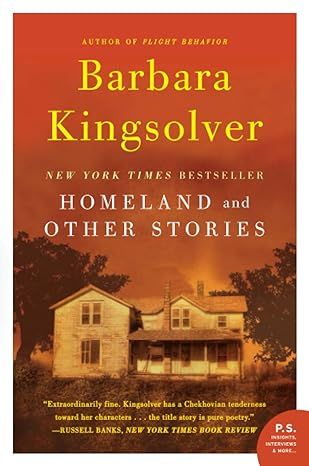
Homeland: And Other Stories
4.2
-
691
$5.24
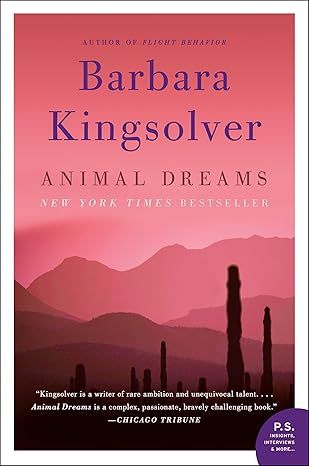
Animal Dreams: A Novel
4.4
-
2,888
$10.49

The Lacuna: A Novel (P.S.)
4.4
-
4,450
$1.77
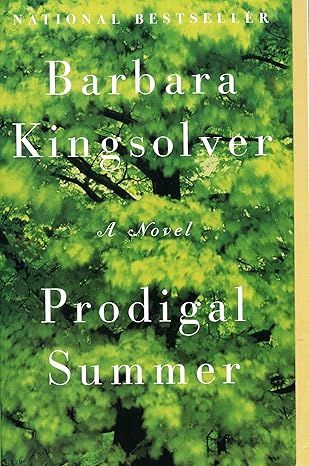
Prodigal Summer: A Novel
4.4
-
6,309
$8.99
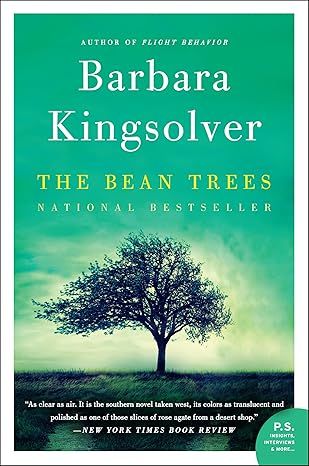
The Bean Trees Anniversary Edition: A Novel
4.4
-
11,504
$2.41

Unsheltered: A Novel
4.2
-
12,750
$5.24

Flight Behavior: A Novel
4.3
-
9,479
$1.84
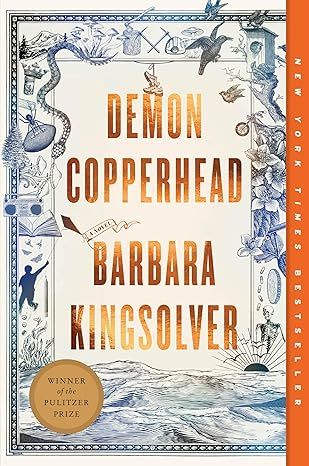
Demon Copperhead: A Novel
4.6
-
110,129
$16.99

The Poisonwood Bible: A Novel
4.5
-
16,256
$12.69
Best Sellers
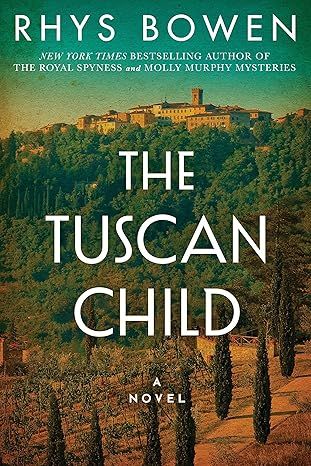
The Tuscan Child
4.2
-
100,022
$8.39
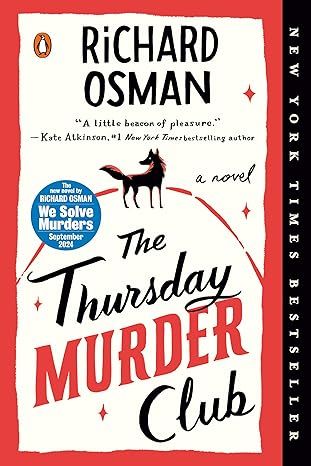
The Thursday Murder Club: A Novel (A Thursday Murder Club Mystery)
4.3
-
155,575
$6.33
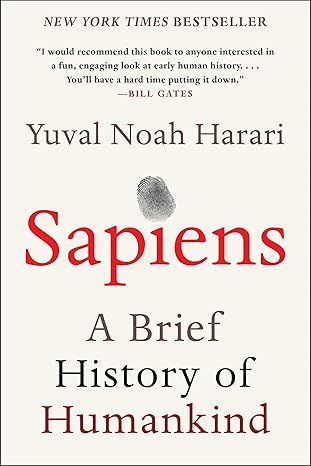
Sapiens: A Brief History of Humankind
4.6
-
140,302
$13.49
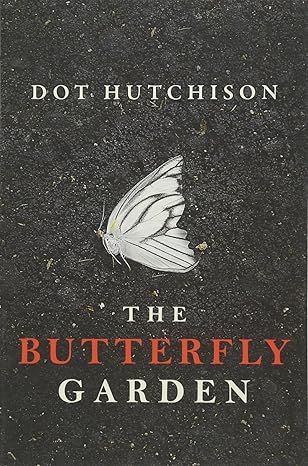
The Butterfly Garden (The Collector, 1)
4.3
-
88,556
$9.59

Things We Hide from the Light (Knockemout Series, 2)
4.4
-
94,890
$11.66
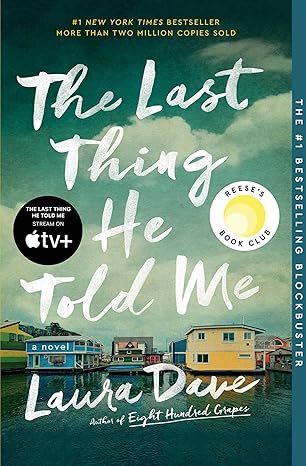
The Last Thing He Told Me: A Novel
4.3
-
154,085
$2.99

The Perfect Marriage: A Completely Gripping Psychological Suspense
4.3
-
143,196
$9.47

The Coworker
4.1
-
80,003
$13.48

First Lie Wins: A Novel (Random House Large Print)
4.3
-
54,062
$14.99

Mile High (Windy City Series Book 1)
4.4
-
59,745
$16.19

Layla
4.2
-
107,613
$8.99

The Locked Door
4.4
-
94,673
$8.53
